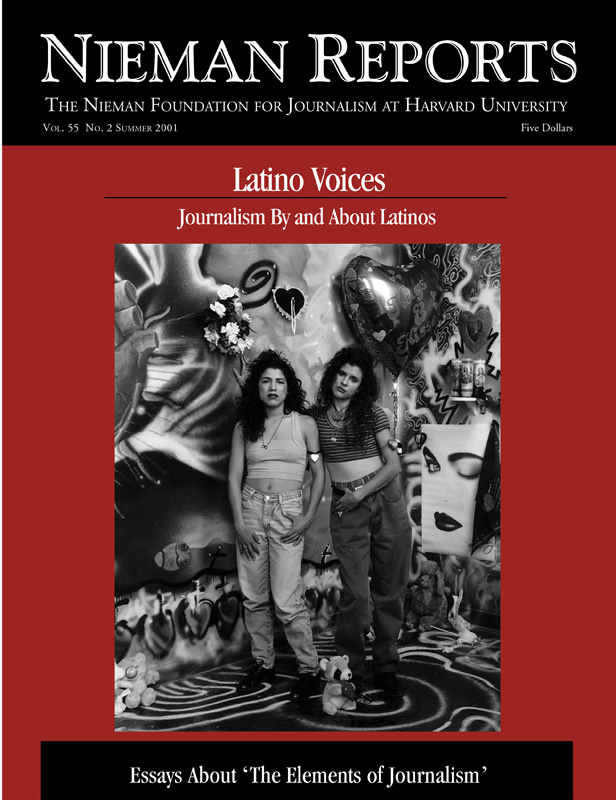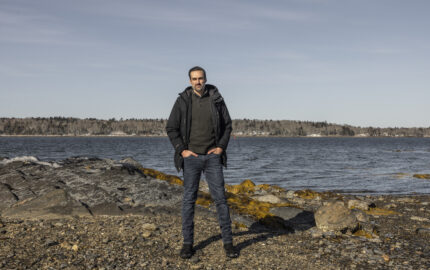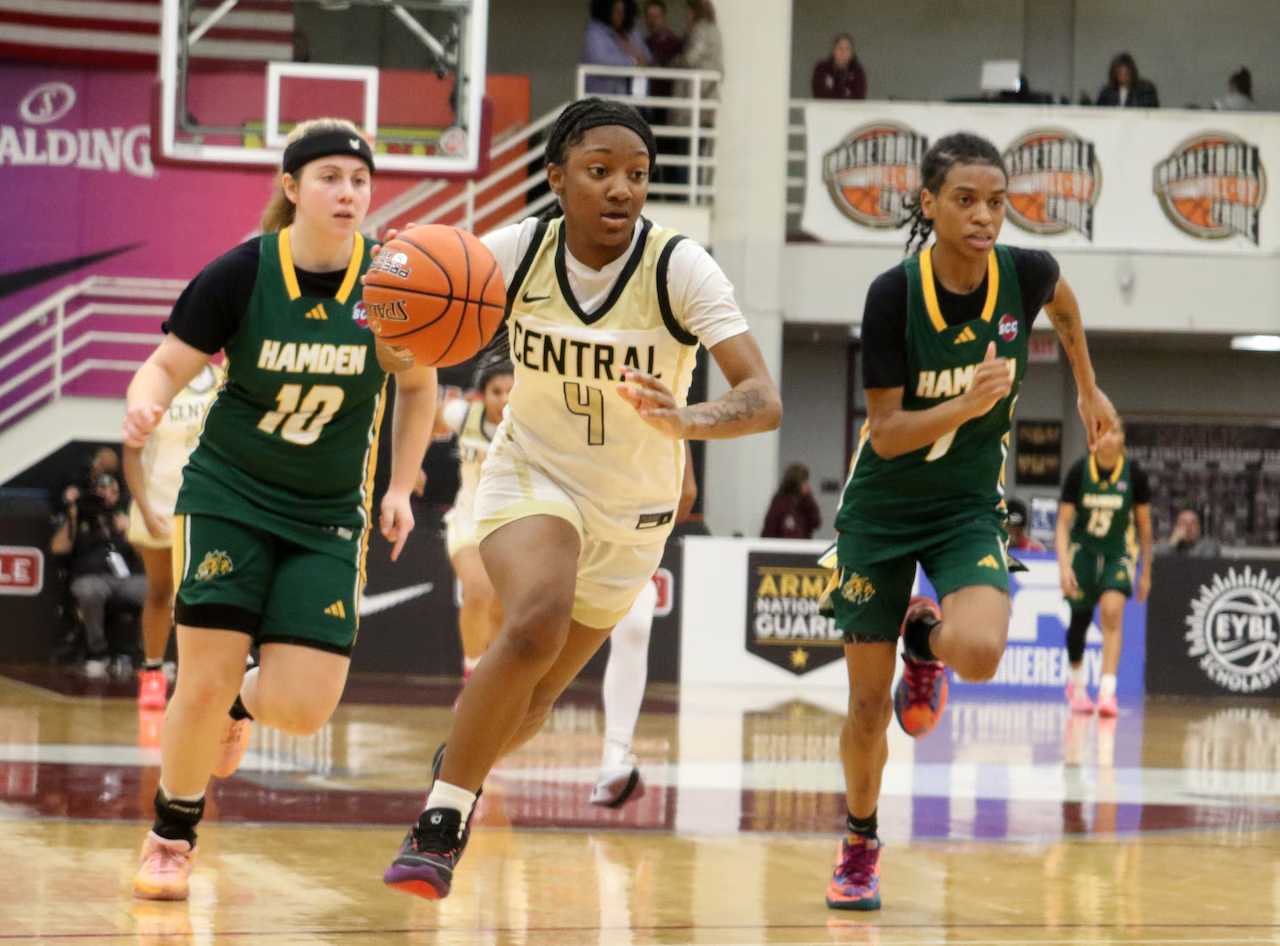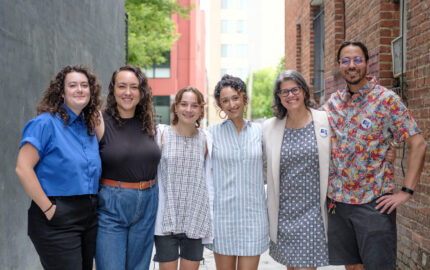As CNN’s urban affairs correspondent and the host of National Public Radio’s “Latino USA,” veteran journalist María Hinojosa reports on a myriad of topics, including issues that affect Latinos. She spoke to Urban Latino magazine’s Managing Editor, Juleyka Lantigua, about the lack of understanding that a lot of journalists have about coverage of Latinos, the impossibility of seeing stories solely from a Latina perspective, and the broadening of the definition of what “American stories” are.
Juleyka Lantigua: Tell me about working for NPR’s “Latino USA.” How has it been since you also work in the “mainstream” media?
María Hinojosa: Historically, my career as a journalist has always been very closely tied to the Latino community, the Spanish language, my roots as a Latina, but also my understanding that I’m based as a journalist in this country.
The mission of “Latino USA” is not only to inform the broad spectrum of public radio audiences about Latinos, but also to inform the multi-ethnic groups within the Latino community about what’s happening in their communities. Ideally, Salvadorans in Los Angeles learn what Cubans are doing in Miami, and Cubans in Miami find out what Mexicans in New York are doing, and Mexicans in New York hear about what Puerto Ricans in Chicago are doing. That creates a sense of a national community.
There is no set audience for our program. To us, it is the broadest possible audience. We know that we’re not only speaking to Latinos. Therefore, I don’t keep anything particular in mind when reporting for “Latino USA.” Perhaps we use more Spanish. That’s purposeful so that we engage listeners; we want them to hear how we speak. We work on an assumption that the listeners of “Latino USA” are knowledgeable; that we don’t necessarily have to explain who Gabriel Garcia Marquez is. We don’t have to explain what an undocumented immigrant is. We assume people already understand such things and that it’s part of why they listen to “Latino USA.”

Photo by Joseph Elizer Cordero.
JL: When you report [on Latino issues or as the urban affairs correspondent] for CNN, do all those things fly out the window?
Hinojosa: When I report for CNN, there is a sense of speaking to so-called middle America. I believe that audience is often—across the board, not only at CNN—“dumbed down” to. That concerns me gravely.
I don’t have a problem with explaining things. For example, I worked on a script, and I wrote that Latinos were becoming the “majority minority.” I profoundly dislike the term “minority.” I try never to use it in my reporting, but given the context of that particular story it was almost necessary. When I wrote “majority minority” my editor said, “What is that?” It’s a term that I’d been hearing and using; I figured people could figure that out but there seemed to be an understanding that, “No, no, no. People in middle America won’t get it.” So we ended up saying, “They will become the largest minority in the country, the so-called majority minority.”
I can live with that because at least the editor said, “Let’s keep it in so we’re educating but let’s explain it.”
My life as a New York Latina journalist includes caring about my subjects and assuming that people are up to snuff on the cultural reality of America. I just got back from northwest Arkansas, an area that is rapidly changing. Can you imagine that for four days all we ate was Mexican food? We were at a 7:30 a.m. rehearsal of a multicultural high-school rap group where you had white kids and Latino kids and one or two African-American kids. They were doing bilingual rap together in this high school. Those kids get it, they understand. Do their parents get it? Maybe not. Do their parents resist it? Probably so, and some may not. But I tend to operate in a world that says people know this stuff, they understand it. And let’s talk to them as if they do understand it and can operate within it. Most editors seem to think people don’t understand it, and we have to explain it. That’s in the best circumstance. In the worst circumstance they say, “No, they don’t know. They don’t understand, and therefore we’re not going to do the story.”
JL: Do you encounter this every time you pitch a story? Or does it only happen when you pitch Latino stories?
Hinojosa: The mainstream media suffers from a profound lack of understanding of how widespread and mainstream the Latino community is in this country. The new census figures make what’s happening clear. It’s only then that people say, “Oh my God! We’ve got to do something. Quick, go out, do some stories.” Whereas for my entire career I’ve been saying, “Don’t tell me that the fact that I pitch Latino stories is ghettoizing or pigeonholing. I’m pitching American stories. Period. Those are not Latino stories. Those are not ‘those people’s’ stories. They’re American stories. They are United States stories. Period.”
Overall, is there a total acceptance and willingness and wanting to continue to report on the Latino community? I would say, “No.” There are moments when we can move forward. But the desire is not there. Do I see that changing? I think the only way that’s going to change is when you get another generation of leadership in management positions in journalism. And that’s not going to happen any time soon because older people who are in positions of power don’t want to give up that power, and those same people most often don’t live in the diverse cultural reality that perhaps a younger generation does. Just like they don’t “get” hip-hop, they often don’t “get” Latinos.
JL: Do any themes surface in what CNN wants to portray via their cultural sieve?
Hinojosa: No. At CNN there has not been a critical mass of reporting on the Latino community. I can’t say that they’ve been interested in covering that population. To their credit, CNN has brought together the only Latina correspondent/ Latina producer team that I know of that reports national news: me and my producer, Rose Arce, a Peruvian American. What we have done is to consistently bring in our stories, and management has been accepting of that. But, of course, they have not been as open as I would like them to be.
JL: Talk to me about being out in the field. What’s going through your mind? Do you think about how you want to tell the story or are you concerned about how you can do it so it gets past your editor?
Hinojosa: When I approach a story I try to combine two things: 1. What does it mean to me? I take into account my own personal experience as a Latina but also as an immigrant, as a woman, as a New Yorker. I don’t only see things from a “Latina” perspective. That would be impossible. 2. How can I broaden the perspective of this mainstream audience? For example, when we were asked to come up with a series on Latinos following the release of the census figures, I said, “Let’s do a three-part series where we look at a new immigrant family, we look at a middle-class family, and we look at a wealthy Latino family, because that’s the range. We’re not just one thing or another.”
JL: When you’re interviewing someone, do you take into consideration things like the unwilling promotion of stereotypes that people might have?
Hinojosa: I am profoundly aware of breaking any possible stereotypes, from how I look on camera to the faces that I put on television. For example, in the series “Latinos in the Heartland,” we interviewed a relatively new immigrant family in northwest Arkansas. When we saw them, we saw them in all of their humanity. Yes, they are working very hard in chicken-processing plants, but what motivates them is their desire to stay together as a family and have their children educated. They might be poor, but their house is immaculate.
I suggested that CNN report on a community that was left behind in the economic boom when we were doing an economic special. I reported on a community organization in Bushwick, Brooklyn called Se Hace el Camino al Andar/You Make the Road by Walking. What did I want to show there? I showed the reality. The reality is that you have these people who are organizing garment workers, construction workers, undocumented immigrants who face the worst conditions but still want to come together as a community organization and fight for their rights.
JL: So, you’re getting at the universal through the specific?
Hinojosa: Yes. I consistently try to bring out my subjects’ humanity so that whoever the viewers or listeners are, they can find commonality. I think that’s the very first tiny step to understanding who they are, who we all are.
The best possible condition for me to work in as a journalist would be where I am let go entirely, where everything that I see that I think is important enough to be a story would be met by my editors saying, “Yes, we’re right on board with you.” The only way I can change that is to become the senior executive producer. But I’m not going to become management. Instead, I would like to see the top people in management live my life for a month. I think they would understand that what Latinos do and how Latinos live our lives and the way we experience the world is at once unique and also part of this society. If they could experience that then they would understand that wanting to see stories about our communities is not that exotic. Whether or not they know it, their children are experiencing this in some way or another; they’re watching “Dora the Explorer” or “Taína” and listening to Elmo on “Sesame Street” speak Spanish.
I think the resistance comes from total ignorance on the part of the people who are in the really powerful positions in the media. As a result of those limited perspectives, we are all being denied good journalism. We should not only get fabulous in-depth stories about the Latino community in Latino publications. We should be able to get them on a regular basis when we turn on CNN, when we turn on the networks’ evening news. We should see them all the time, not solely on special occasions. They should simply be integrated into every day’s report. We are far, far away from that point.
María Hinojosa is the author of “Raising Raul: Adventures Raising Myself and My Son” (Viking Press, hc.; Penguin Press, pb.) and “Crews: Gang Members Talk with María Hinojosa” (Harcourt Brace).
Juleyka Lantigua: Tell me about working for NPR’s “Latino USA.” How has it been since you also work in the “mainstream” media?
María Hinojosa: Historically, my career as a journalist has always been very closely tied to the Latino community, the Spanish language, my roots as a Latina, but also my understanding that I’m based as a journalist in this country.
The mission of “Latino USA” is not only to inform the broad spectrum of public radio audiences about Latinos, but also to inform the multi-ethnic groups within the Latino community about what’s happening in their communities. Ideally, Salvadorans in Los Angeles learn what Cubans are doing in Miami, and Cubans in Miami find out what Mexicans in New York are doing, and Mexicans in New York hear about what Puerto Ricans in Chicago are doing. That creates a sense of a national community.
There is no set audience for our program. To us, it is the broadest possible audience. We know that we’re not only speaking to Latinos. Therefore, I don’t keep anything particular in mind when reporting for “Latino USA.” Perhaps we use more Spanish. That’s purposeful so that we engage listeners; we want them to hear how we speak. We work on an assumption that the listeners of “Latino USA” are knowledgeable; that we don’t necessarily have to explain who Gabriel Garcia Marquez is. We don’t have to explain what an undocumented immigrant is. We assume people already understand such things and that it’s part of why they listen to “Latino USA.”

Photo by Joseph Elizer Cordero.
JL: When you report [on Latino issues or as the urban affairs correspondent] for CNN, do all those things fly out the window?
Hinojosa: When I report for CNN, there is a sense of speaking to so-called middle America. I believe that audience is often—across the board, not only at CNN—“dumbed down” to. That concerns me gravely.
I don’t have a problem with explaining things. For example, I worked on a script, and I wrote that Latinos were becoming the “majority minority.” I profoundly dislike the term “minority.” I try never to use it in my reporting, but given the context of that particular story it was almost necessary. When I wrote “majority minority” my editor said, “What is that?” It’s a term that I’d been hearing and using; I figured people could figure that out but there seemed to be an understanding that, “No, no, no. People in middle America won’t get it.” So we ended up saying, “They will become the largest minority in the country, the so-called majority minority.”
I can live with that because at least the editor said, “Let’s keep it in so we’re educating but let’s explain it.”
My life as a New York Latina journalist includes caring about my subjects and assuming that people are up to snuff on the cultural reality of America. I just got back from northwest Arkansas, an area that is rapidly changing. Can you imagine that for four days all we ate was Mexican food? We were at a 7:30 a.m. rehearsal of a multicultural high-school rap group where you had white kids and Latino kids and one or two African-American kids. They were doing bilingual rap together in this high school. Those kids get it, they understand. Do their parents get it? Maybe not. Do their parents resist it? Probably so, and some may not. But I tend to operate in a world that says people know this stuff, they understand it. And let’s talk to them as if they do understand it and can operate within it. Most editors seem to think people don’t understand it, and we have to explain it. That’s in the best circumstance. In the worst circumstance they say, “No, they don’t know. They don’t understand, and therefore we’re not going to do the story.”
JL: Do you encounter this every time you pitch a story? Or does it only happen when you pitch Latino stories?
Hinojosa: The mainstream media suffers from a profound lack of understanding of how widespread and mainstream the Latino community is in this country. The new census figures make what’s happening clear. It’s only then that people say, “Oh my God! We’ve got to do something. Quick, go out, do some stories.” Whereas for my entire career I’ve been saying, “Don’t tell me that the fact that I pitch Latino stories is ghettoizing or pigeonholing. I’m pitching American stories. Period. Those are not Latino stories. Those are not ‘those people’s’ stories. They’re American stories. They are United States stories. Period.”
Overall, is there a total acceptance and willingness and wanting to continue to report on the Latino community? I would say, “No.” There are moments when we can move forward. But the desire is not there. Do I see that changing? I think the only way that’s going to change is when you get another generation of leadership in management positions in journalism. And that’s not going to happen any time soon because older people who are in positions of power don’t want to give up that power, and those same people most often don’t live in the diverse cultural reality that perhaps a younger generation does. Just like they don’t “get” hip-hop, they often don’t “get” Latinos.
JL: Do any themes surface in what CNN wants to portray via their cultural sieve?
Hinojosa: No. At CNN there has not been a critical mass of reporting on the Latino community. I can’t say that they’ve been interested in covering that population. To their credit, CNN has brought together the only Latina correspondent/ Latina producer team that I know of that reports national news: me and my producer, Rose Arce, a Peruvian American. What we have done is to consistently bring in our stories, and management has been accepting of that. But, of course, they have not been as open as I would like them to be.
JL: Talk to me about being out in the field. What’s going through your mind? Do you think about how you want to tell the story or are you concerned about how you can do it so it gets past your editor?
Hinojosa: When I approach a story I try to combine two things: 1. What does it mean to me? I take into account my own personal experience as a Latina but also as an immigrant, as a woman, as a New Yorker. I don’t only see things from a “Latina” perspective. That would be impossible. 2. How can I broaden the perspective of this mainstream audience? For example, when we were asked to come up with a series on Latinos following the release of the census figures, I said, “Let’s do a three-part series where we look at a new immigrant family, we look at a middle-class family, and we look at a wealthy Latino family, because that’s the range. We’re not just one thing or another.”
JL: When you’re interviewing someone, do you take into consideration things like the unwilling promotion of stereotypes that people might have?
Hinojosa: I am profoundly aware of breaking any possible stereotypes, from how I look on camera to the faces that I put on television. For example, in the series “Latinos in the Heartland,” we interviewed a relatively new immigrant family in northwest Arkansas. When we saw them, we saw them in all of their humanity. Yes, they are working very hard in chicken-processing plants, but what motivates them is their desire to stay together as a family and have their children educated. They might be poor, but their house is immaculate.
I suggested that CNN report on a community that was left behind in the economic boom when we were doing an economic special. I reported on a community organization in Bushwick, Brooklyn called Se Hace el Camino al Andar/You Make the Road by Walking. What did I want to show there? I showed the reality. The reality is that you have these people who are organizing garment workers, construction workers, undocumented immigrants who face the worst conditions but still want to come together as a community organization and fight for their rights.
JL: So, you’re getting at the universal through the specific?
Hinojosa: Yes. I consistently try to bring out my subjects’ humanity so that whoever the viewers or listeners are, they can find commonality. I think that’s the very first tiny step to understanding who they are, who we all are.
The best possible condition for me to work in as a journalist would be where I am let go entirely, where everything that I see that I think is important enough to be a story would be met by my editors saying, “Yes, we’re right on board with you.” The only way I can change that is to become the senior executive producer. But I’m not going to become management. Instead, I would like to see the top people in management live my life for a month. I think they would understand that what Latinos do and how Latinos live our lives and the way we experience the world is at once unique and also part of this society. If they could experience that then they would understand that wanting to see stories about our communities is not that exotic. Whether or not they know it, their children are experiencing this in some way or another; they’re watching “Dora the Explorer” or “Taína” and listening to Elmo on “Sesame Street” speak Spanish.
I think the resistance comes from total ignorance on the part of the people who are in the really powerful positions in the media. As a result of those limited perspectives, we are all being denied good journalism. We should not only get fabulous in-depth stories about the Latino community in Latino publications. We should be able to get them on a regular basis when we turn on CNN, when we turn on the networks’ evening news. We should see them all the time, not solely on special occasions. They should simply be integrated into every day’s report. We are far, far away from that point.
María Hinojosa is the author of “Raising Raul: Adventures Raising Myself and My Son” (Viking Press, hc.; Penguin Press, pb.) and “Crews: Gang Members Talk with María Hinojosa” (Harcourt Brace).



